Seaports are vital gateways for global trade, bustling with activity and movement. However, have you ever wondered how these massive hubs generate revenue? Beyond their primary function of facilitating the import and export of goods, seaports employ a variety of ingenious strategies to bolster their income. From charging fees for docking and cargo handling to offering value-added services like logistics and warehousing, ports have evolved into multifaceted economic powerhouses. In this article, we delve into the fascinating world of seaport revenue streams, uncovering the hidden mechanisms behind these maritime giants’ financial success.
The Importance of Seaports in the Philippines
Seaports are vital infrastructures that contribute significantly to the economic growth and development of any country. In the case of the Philippines, with its archipelagic geography, seaports play a crucial role in facilitating trade and connecting the different islands. They serve as gateways for import and export activities, ensuring the smooth movement of goods across regions.
Apart from enabling trade, seaports in the Philippines generate revenue through various sources. One such source is port fees and charges levied on vessels using the facilities. These fees include docking charges, berthing fees, cargo handling fees, and wharfage charges. Additionally, ports also earn income from leasing land and other terminal facilities to logistics companies or private entities for storage purposes.
Furthermore, seaports are key drivers of tourism in the Philippines. Many famous tourist destinations can only be reached by sea transport since they are located on remote islands or in coastal areas with no airports nearby. As a result, cruise liners bring tourists who disembark at these ports and contribute significantly to local economies through tourism-related spending.
Seaports hold immense importance for Philippine trade facilitation while also acting as critical revenue generators for both public and private entities involved in their operations. Commensurate investments must be made to enhance port infrastructure capacity so that it can meet future demands efficiently while remaining financially sustainable.

Container Fees: The Primary Source of Seaport Revenue
Container fees play a crucial role in generating revenue for seaports in the Philippines. These fees, sometimes referred to as terminal handling charges, are levied on shipping companies for using the ports’ facilities and services. The importance of container fees as a primary source of revenue cannot be overstated, particularly considering the growing volume of global trade that relies heavily on containerized shipments.
One fresh perspective to consider is how container fees have become an increasingly significant revenue stream for seaports amidst technological advancements. With the advent of larger cargo ships and automation in port operations, more containers are being handled in a single visit. This not only brings efficiency but also increases the overall revenue generated through container fees.
Another intriguing insight is how seaports strategically set their container fee structures based on multiple factors such as competitiveness, geographical location, local economic conditions, and infrastructure development needs. As a result, seaport authorities continuously analyze market trends and adjust these fees accordingly to strike a balance between attracting shipping lines while ensuring sustainable revenues.
Container fees remain a vital component in supporting the financial sustainability of seaports across the globe. Understanding how these fees contribute significantly to seaport revenues can shed light on various aspects, such as infrastructure investments, operational improvements, and overall growth strategies pursued by ports worldwide.

Vessel Servicing and Facilities Fees
Vessel servicing and facility fees are an essential source of revenue for seaports in the Philippines. As ships dock and unload their cargo, they rely on a range of services and facilities provided by port operators.
One interesting aspect of vessel servicing fees is that they are often based on a tiered structure. This means that larger vessels incur higher fees compared to smaller ones. This makes sense considering the increased demand for resources and manpower when dealing with larger vessels. The size-based fee system also motivates port operators to improve their infrastructure to accommodate larger ships more efficiently.
Furthermore, port authorities have been exploring new opportunities to provide value-added services to ship owners and operators. For instance, some ports now offer bunkering – providing fuel directly from the seaport facility instead of having ships refuel at other locations. By diversifying their service offerings in this way, ports not only generate additional revenue but also enhance their competitiveness within the maritime industry.
Vessel servicing and facility fees play a crucial role in financing the operations and development of Philippine seaports. Port authorities must carefully assess these fees while considering factors such as vessel size, the level of service required, and potential value-added offerings.

Tugging: Revenue Streams for Seaports
Tugging, also known as harbor towing, is a crucial service provided by seaports worldwide. It involves the use of powerful tugboats to maneuver large vessels in and out of ports safely. Beyond its importance for navigational purposes, tugging has become a significant source of revenue for Philippine ports. Seaports in the country have recognized the economic potential of this service and have capitalized on it by offering specialized towing services to shipping companies.
One revenue stream that tugging generates is through contractual agreements with shipping lines and vessel operators. These contracts ensure that tugboats are readily available whenever they are needed, providing peace of mind to shipowners who rely on these services. In addition to charging fees for individual tasks such as berthing or undocking vessels, seaports often offer annual contracts that provide continuous access to tug services at a fixed cost. This reliable income source allows port authorities to plan investments in improving their infrastructure and expanding their operations.
Another fascinating aspect of tugging as a revenue stream is its potential for growth and innovation. With the advent of larger ships in international trade, there is an increasing need for more powerful tugboats capable of handling these behemoth vessels. Seaports can leverage this demand by constantly upgrading their fleet with technologically advanced tugboats equipped with state-of-the-art features like azimuth thrusters or dynamic positioning systems. By embracing advancements in maritime technology, ports can stay ahead of the competition while increasing their revenue through higher charges for specialized services.

Stevedoring: Revenue Streams for Seaports
Stevedoring, often overlooked as a revenue stream for seaports, is an essential service that plays a crucial role in the efficient movement of goods. Stevedores are the unsung heroes who handle and load/unload cargo from vessels in ports. While it may seem like a basic task, stevedoring actually involves intricate coordination and expertise to ensure the safe handling and storage of various types of cargo. Seaports charge fees to shipping companies for these services, generating significant revenue.
In addition to basic stevedoring services, some ports have expanded their offerings to include value-added services such as warehousing and distribution. This diversification allows seaports to tap into additional revenue streams by providing comprehensive logistics solutions to importers and exporters. By offering end-to-end supply chain solutions within the port premises, seaports can attract more customers and increase their market share. These value-added services also enable ports to capture a larger portion of the overall logistics cost pie while delivering increased convenience and efficiency for businesses.
However, there are challenges associated with maintaining stevedoring operations as a reliable revenue stream. With advancements in automation technology, such as robotic loaders and automated container terminals, traditional manual, labor-intensive stevedoring operations could become obsolete in the future. Seaports need to continually adapt and innovate their offerings by investing in advanced technologies and upskilling their workforce accordingly.
While stevedoring may not always be at the forefront when discussing seaport revenue streams, its significance cannot be understated.
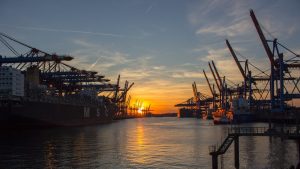
Water and Other Supplies: Revenue Streams for Seaports
Seaports play a pivotal role in the movement of goods and people, but it’s not just shipping and logistics that generate revenue for these ports. One often overlooked revenue stream comes from the sale of water. Seaports have vast bodies of water at their disposal, making them prime locations for companies looking to purchase large amounts of water for various purposes, such as manufacturing or agricultural activities. By strategically positioning themselves as suppliers of this crucial resource, seaports can tap into a lucrative income source.
In addition to water, seaports also have the opportunity to diversify their revenue streams by offering sundry supplies to ships docking at their port. These supplies could include everything from fuel and lubricants to provisions like food and toiletries. By providing these essentials on-site, ports eliminate the need for ships to make additional stops, saving time and money for both parties involved. This added convenience can lead to increased ship traffic and, ultimately, higher revenues for seaports looking to maximize their profit potential.
By exploring alternative revenue streams such as water supply services and sundry supplies provision, seaports can bolster their financial stability while simultaneously enhancing their value proposition in an increasingly competitive market. By capitalizing on the resources readily available within their vicinity, seaports can pave the way toward sustainable growth while meeting the evolving needs of the industries they serve.

Cargo Services and Facility Fees
Cargo services and facility fees are an integral part of the revenue streams for Philippine seaports. These fees play a crucial role in ensuring the smooth flow of goods in and out of the country, making them vital to the overall economy. Cargo services encompass a wide range of activities, such as loading, unloading, and storage, while facility fees cover the use of port infrastructure and equipment.
One interesting aspect of cargo services is the growing trend toward automation and digitization. Many Philippine seaports have started introducing advanced technologies to streamline cargo handling processes. This includes automated cranes that can efficiently load and unload containers from ships, along with sophisticated inventory management systems that track goods throughout their journey at the port. As these technologies continue to evolve, they not only enhance efficiency but also reduce operational costs for both seaports and cargo owners.
When it comes to facility fees, seaports are constantly looking for innovative ways to generate income beyond basic service charges. An emerging trend is partnering with private companies to develop specialized facilities within port premises that cater to specific industries or sectors. For example, some ports have forged partnerships with logistics companies to create dedicated warehousing facilities that offer value-added services like packaging, labeling, or sorting operations. By diversifying their offerings in this way, seaports can attract more customers and maximize revenue opportunities.
Cargo services and facility fees form a crucial part of how Philippine ports generate income.

Charging for Vessel Servicing and Facilities
Seaports play a crucial role in facilitating trade and ensuring the smooth movement of goods. To continue offering quality services, ports need to generate revenue – and one of the main sources is by charging fees for vessel servicing and facilities.
Charging for vessel servicing encompasses various aspects such as harbor dues, pilotage, towage, and berthing fees. These charges are essential to cover the costs associated with maintaining port infrastructure, providing skilled personnel like pilots and tugboat operators, as well as mitigating risks during vessel entry into the port. While some may argue that charging these fees can increase costs for shipping companies and ultimately be passed on to consumers, it is important to recognize that adequate revenues are necessary for sustaining efficient port operations.
Furthermore, charging for facilities within seaports has also become an effective revenue stream. Ports offer a range of amenities to facilitate cargo handling, including container yards, warehouses, cold storage facilities, and fuel stations. By levying fees on these services or rentals of such spaces within the port premises, ports can generate additional income while meeting the needs of their customers. This diversification in revenue streams ensures that seaports can continue to invest in modernizing their infrastructure to keep up with evolving industry demands.

Cargo Services and Facilities
Cargo services and facilities are vital components of seaports, contributing significantly to their revenue streams. These services encompass a wide range of activities, including container handling, warehousing, distribution, and customs clearance. With the continuous growth of global trade, seaports play a pivotal role in facilitating the movement of goods between countries. To maximize revenue generation from cargo services, Philippine ports have been investing in modern infrastructure and advanced technology to streamline operations and enhance efficiency.
One key area of focus for seaports is container handling. Efficient container terminals equipped with state-of-the-art equipment like gantry cranes help optimize the transfer of containers from ships to trucks or trains and vice versa. These facilities not only expedite cargo movement but also reduce turnaround time for vessels, resulting in increased throughput capacity and improved customer satisfaction.
In addition to container handling, warehouses and distribution centers within port areas are crucial elements that contribute to seaport revenue streams. These facilities provide temporary storage for imported goods before they are transported to their final destinations. With careful planning and effective management systems in place, these warehouses can facilitate just-in-time delivery processes while generating additional income through rental fees.
Furthermore, customs clearance is an integral part of cargo services at seaports. Having efficient customs processes ensures smoother transactions for importers and exporters by minimizing delays caused by paperwork or inspections at ports of entry or exit.
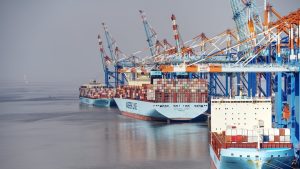
Leasing Land for Commercial and Industrial Activities
One lucrative revenue stream for Philippine ports is leasing land for commercial and industrial activities. With their strategic location and access to international trade routes, many ports in the country have vast stretches of land that can be leased out to businesses. These leased areas are often used for activities such as warehousing, manufacturing, logistics operations, and even retail outlets.
Leasing land for commercial and industrial activities not only generates substantial income for port authorities but also creates opportunities for economic growth in the surrounding areas. By attracting businesses to set up shops near the port, employment prospects increase, local industries prosper, and overall economic activity gets a boost. Moreover, with more businesses leasing land in these areas, there is a potential increase in revenue from property taxes, which further benefits the local government.
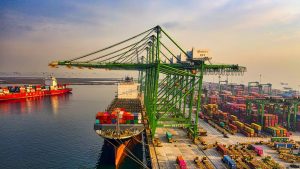
Dockage fees: Charges for Vessel Mooring
Dockage fees are an essential source of revenue for seaports in the Philippines. These fees are charges imposed on vessels for mooring at the port, and they play a crucial role in funding port operations and maintenance. An interesting aspect to consider is that dockage fees are not a fixed amount but rather vary depending on factors such as vessel size, duration of stay, and services required.
One perspective to consider is how these fees can incentivize the efficient use of port facilities. By making larger vessels pay higher dockage fees, ports encourage the utilization of smaller ships or land-based warehouses for cargo storage. This fosters better utilization of available space and ensures that all types of vessels can be accommodated without congestion or delays.
Another interesting point is how dockage fees have evolved with technology. In the past, port operators relied on manual methods to track vessel arrivals and departures, making it difficult to calculate dockage fees accurately. However, with advancements in technology, including Automatic Identification System (AIS) and Electronic Data Interchange (EDI), ports now have real-time data on vessel activities, which allows for more accurate billing based on actual usage.
While dockage fees may seem like a burden for vessel owners, they serve an important purpose in supporting seaport operations. By adjusting the charges based on vessel size and stay duration, ports can encourage efficient use of their facilities while generating revenue for future development.
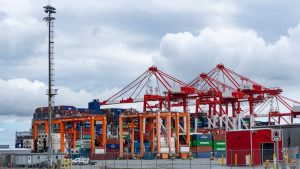
Storage Fees: Generating Income from Warehousing Services
Storage fees play a crucial role in generating income for seaports through warehousing services. As shipping volume increases and supply chains become more complex, the demand for storage solutions escalates. Seaport authorities capitalize on this opportunity by providing secure facilities for storing various types of cargo, ranging from perishable goods to hazardous materials.
One interesting trend in storage fees is the adoption of flexible pricing models. Traditionally, ports charged flat rates based on the duration of storage. However, many seaports now offer tiered or adjustable rates that depend on factors such as cargo type, handling requirements, and market demand. This approach allows ports to optimize their revenue streams by tailoring pricing structures to suit different customers’ needs while remaining competitive in the marketplace.
Furthermore, seaport authorities are increasingly leveraging technology to enhance their warehousing services. Automated inventory management systems enable efficient tracking and retrieval of stored goods while reducing human error. Some ports have even implemented blockchain technology to provide transparency and security in supply chain operations. By embracing these technological advancements, seaports can not only generate income from storage fees but also attract clients seeking advanced logistics solutions.
Storage fees are a significant source of income for Philippine ports through their warehousing services. Flexible pricing models and technological innovations contribute to maximizing revenue streams while meeting evolving customer demands effectively. As global trade continues to grow, these revenue streams will remain crucial for Philippine ports striving towards sustainable development and long-term success.

Pilotage Fees: Providing Vessel Navigation Assistance
One of the lesser-known revenue streams for Philippine ports is pilotage fees. Pilotage refers to the practice of providing vessel navigation assistance by skilled pilots who have in-depth knowledge of local waterways and port operations. While it may not be evident to the average person, ship captains often rely on these expert navigators to safely maneuver their vessels through complex and sometimes treacherous waters.
The collection of pilotage fees helps cover the costs associated with maintaining a highly-trained team of pilots, as well as investing in advanced navigation technologies and equipment. This crucial service ensures that ships can navigate safely while avoiding collisions, grounding incidents, or other navigational hazards. As such, it plays a significant role in ensuring the overall efficiency and safety of maritime transport operations within Philippine ports.
Pilotage fees provide an essential income stream for Philippine ports while serving a crucial function within maritime operations. The skillful guidance provided by experienced pilots enables smooth and safe passage for vessels through challenging waters, safeguarding both the environment and human lives along the way. This unique aspect adds another layer to understanding how ports generate revenue beyond traditional sources like container handling or berth rentals, further highlighting the multifaceted nature of seaport finances.
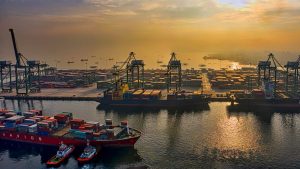
Equipment Rentals: Seaport Revenue Streams
Seaports are not just bustling hubs of shipping and trade; they can also be lucrative sources of revenue through equipment rentals. In the fast-paced world of seaport operations, various types of equipment are constantly in demand, such as the rental of cranes, forklifts, and bulldozers. Seaport authorities leverage this need by offering rental services to port users and external businesses alike.
One key advantage of renting equipment from a seaport is the convenience it offers businesses operating within or near the port premises. Instead of having to source equipment from elsewhere, companies can easily access a wide range of machinery directly at the port. This not only saves time but also reduces transportation costs and logistics complexities.
Another benefit that comes with renting equipment specifically from a seaport is its availability on short notice. In maritime operations, unforeseen circumstances like vessel delays or sudden shifts in cargo volume can disrupt schedules and increase demands for certain types of machinery. Seaports, being strategically positioned at major transport networks, have greater flexibility to respond swiftly to these fluctuations by providing temporary rental solutions.
By diversifying their revenue streams through equipment rentals, seaports can capitalize on their prime location advantages while simultaneously offering valuable services to their customers. The rental income generated helps offset operational costs and infrastructure investments required for maintaining efficient logistical systems within the port precincts. Ultimately, embracing this business model strengthens both the financial sustainability of seaports and their contribution to regional economic growth.

Waste Disposal: Seaport Revenue Streams
One often overlooked revenue stream for seaports is waste disposal. With the increasing number of ships, cargo handling, and port operations, waste management has become a critical aspect of seaport operations. Seaports generate a significant amount of waste that needs to be properly disposed of to maintain environmental sustainability and comply with regulations.
Seaports have realized the potential for monetizing waste disposal by charging fees to handle and dispose of the waste generated within their premises. These fees can be applied to various types of waste, such as hazardous materials, solid waste from ships or terminals, and even non-hazardous items like plastics or packaging materials. By providing efficient and environmentally friendly waste disposal services, seaports not only generate additional revenue but also enhance their reputation as responsible stakeholders in promoting sustainable practices in the maritime industry.
Furthermore, some innovative ports have taken advantage of opportunities to turn waste into valuable resources through recycling initiatives. For instance, organic wastes can be transformed into compost or biofuel through anaerobic digestion processes. These products can then be sold or used within the port itself for various purposes, such as landscaping or powering machinery. This circular economy approach not only generates income but also reduces dependence on external resources while minimizing the carbon footprint associated with traditional waste disposal methods.
Seaport authorities must recognize waste disposal as a potential revenue stream by implementing proper management systems that prioritize sustainability and compliance with regulations.
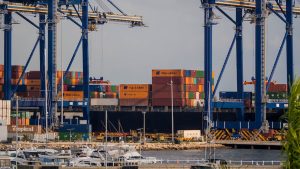
Real Estate Development: Maximizing the Value of Port Land
One of the ways that Philippine ports can maximize their revenue streams is through real estate development on port land. The strategic location and vast expanse of port areas make them prime locations for commercial and residential developments. By capitalizing on these opportunities, ports not only generate income but also contribute to the overall economic growth of the surrounding areas.
Real estate development in port areas can take various forms, such as building shopping complexes, industrial parks, or mixed-use developments. These projects not only create employment opportunities but also attract tourists and business investors to the region. Moreover, by diversifying their revenue sources beyond traditional maritime activities, ports become less reliant on unpredictable market conditions and global economic fluctuations.
To ensure that real estate development maximizes the value of port land, careful planning and collaboration are necessary. Stakeholders must work closely with urban planners, architects, and developers to design projects that adhere to sustainability principles while meeting market demands. Additionally, incorporating green spaces within these developments can enhance their overall appeal while promoting environmental consciousness.
By cleverly utilizing port land for real estate development projects, Philippine ports can unlock new revenue sources and contribute to local economic growth in an environmentally sustainable way. This approach can transform underutilized port areas into vibrant hubs that benefit both the maritime industry and the communities they serve.

Other Seaport Revenue Streams: Fuel Sales, Concessions, etc.
In addition to cargo handling fees, Philippine ports have found other creative ways to generate revenue. One source of income for ports is fuel sales. Many ports in the Philippines have established their own fueling stations within their premises, offering various types of fuel, such as diesel and gasoline, to vessels both at berth and in transit. This not only provides convenience for the ships but also creates a steady revenue stream for the port authorities.
Another lucrative revenue stream for Philippine ports is through concessions. Ports often lease out spaces within their premises to retailers or service providers, allowing them to set up shops or offer services such as restaurants, cafes, duty-free stores, and repair facilities. These concessionaires pay rent or a percentage of their earnings back to the port authorities. This diversification of services not only enhances the overall experience for port users but also generates additional income that supports infrastructure maintenance and development.
By exploring these alternative revenue streams beyond traditional cargo handling fees, Philippine ports are able to diversify their sources of income and reduce dependency on just one aspect of operations. Fuel sales and concessions provide stable streams of revenue that can help enhance current services and invest in future growth opportunities for Philippine ports. As competition among ports continues to grow globally, it becomes even more important for these entities to innovate and explore new avenues that attract customers while keeping revenues strong.
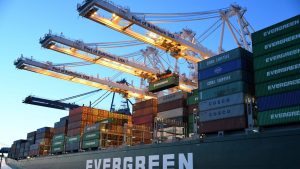
Ship Repair: Seaport Revenue Streams During Docking
Ship repair is a crucial revenue stream for seaports during docking periods. When ships are in need of maintenance, repairs, or upgrades, they head to the nearest port that offers these services, like Amaya Dockyard & Marine Services Inc. in Tanza, Cavite, Philippines. Seaports capitalize on this opportunity by providing dry-docking facilities and skilled technicians who can handle a range of repairs, from routine maintenance to major overhauls.
- Email us: info@amayadockyard.com
- Call our 24-hour hotline: +63 917 633 0479
- Viber: +63 917 633 0479
- WhatsApp: +63 917 633 0479
- Facebook Messenger: Click here
- Click here to inquire
One interesting aspect of ship repair as a revenue stream is the potential for international collaborations. Many seaports partner with global ship repair companies to provide specialized services and attract more ships from around the world. These partnerships not only bring in additional revenue but also enhance the reputation of the port as a go-to destination for quality ship repair work.
Moreover, some ports have taken innovation to another level by establishing dedicated shipyards solely focused on specific types of vessels or industries. By catering to niche markets such as offshore support vessels or LNG carriers, these specialized shipyards can command higher rates and attract more clients seeking expertise in their specific domains.
Ship repair plays a vital role in generating revenue for seaports during docking periods. From routine maintenance to major repairs and international collaborations with global players, seaports find innovative ways to tap into this lucrative market. The establishment of specialized shipyards further strengthens their position by catering specifically to niche markets within the maritime industry.
Conclusion: Seaport Revenue Streams in the Philippines
In conclusion, Philippine ports have a variety of revenue streams that contribute to their overall profitability. While container handling fees and storage charges are the primary sources of income, seaports also generate revenue through services such as pilotage and towage. Additionally, leasing out land for commercial use and providing shore power to vessels can be lucrative ventures for port operators.
However, it is important to note that the economic impact of seaports goes beyond just their direct revenue streams. Ports create employment opportunities, boost local industries, and contribute to national GDP growth. Furthermore, they facilitate international trade by providing efficient transportation and logistics services.
As the Philippines continues to invest in port infrastructure development, there may be potential for new revenue streams in the future. For instance, by embracing digitalization and automation technologies, ports can improve operational efficiency and attract more shipping lines. Moreover, exploring alternative energy sources like solar or wind power could not only reduce costs but also make ports more sustainable in the long run.
In summary, while container handling fees remain essential for seaport revenue generation in the Philippines, diversifying income sources is crucial for long-term sustainability. By investing in modernization and exploring innovative opportunities within the maritime industry, Philippine ports can expand their revenue streams while enhancing their overall contribution to economic growth.
